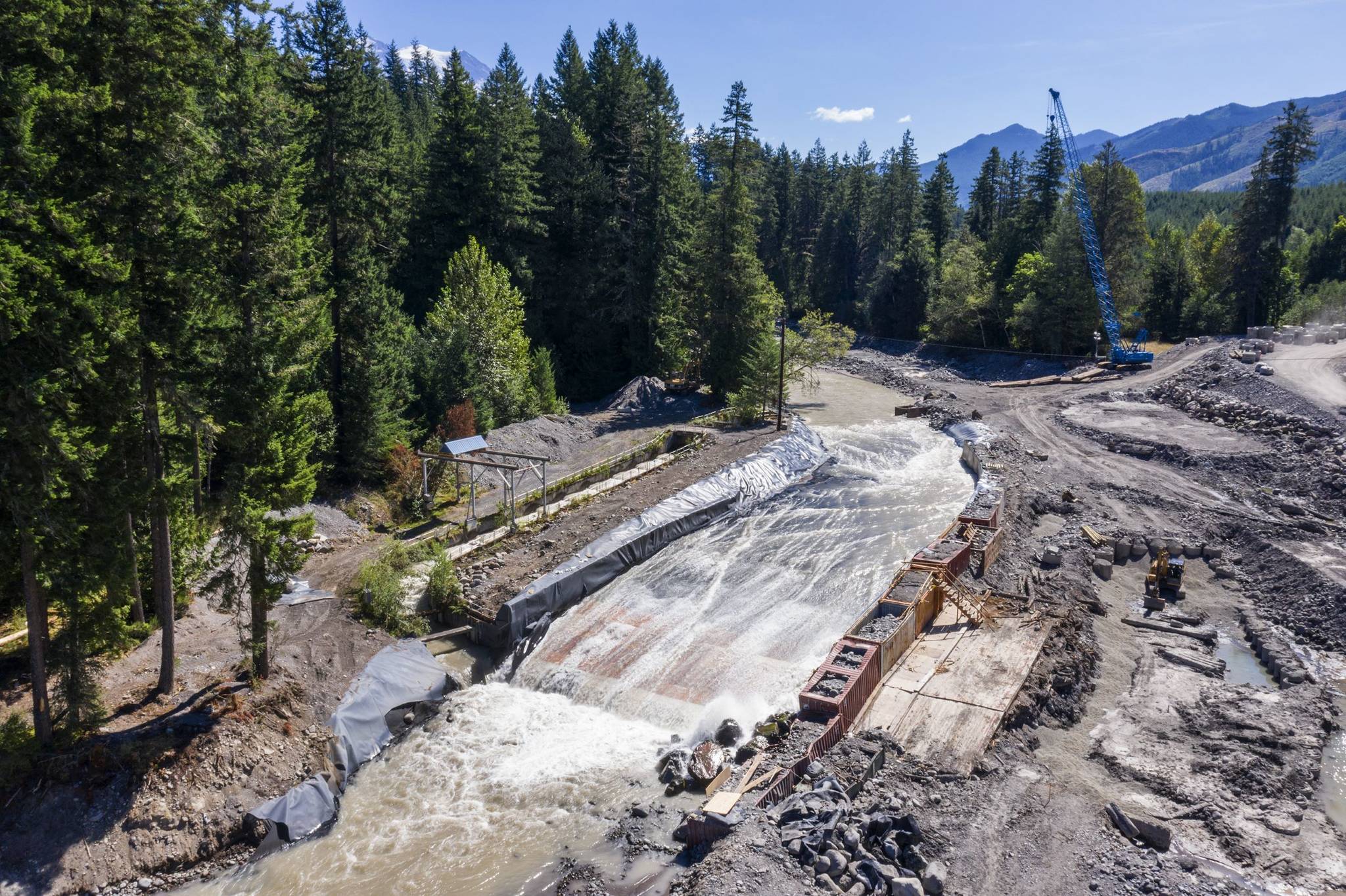Lynda V. Mapes
The Seattle Times
The Washington Department of Ecology has fined Electron Hydro, LLC, $501,000 for spilling discarded plastic field turf into the Puyallup River last summer.
The company used the turf to line a bypass channel as it diverted the river’s flow during a construction project.
Pieces of the artificial turf were found up to 21 miles downstream. Deposits of ground-up tire rubber — used as padding for the turf — are believed to have cascaded to the river’s mouth and into Commencement Bay in Tacoma, 41 miles downstream, the Ecology Department said in a news release Tuesday.
The turf and its crumb rubber material are toxic when ingested by fish and other aquatic life. The Puyallup is home to many protected endangered species: steelhead, bull trout and Chinook, a critical food source for endangered southern resident orcas.
Tire rubber is particularly toxic to coho, causing pre-spawn mortality, scientists have recently documented. Usually the source is indirect, from stormwater washing off roads. But in this case, the rubber was ground up and deposited directly in the river.
“These toxic materials had no place in the river,” said Ecology Director Laura Watson in the release. “The force of the water tore the turf apart, washed it down river, and sent it right into the food web. This is an environmental tragedy that didn’t have to happen.”
In addition to the fine, Ecology issued an administrative order to the company to address ongoing water-quality violations related to Electron Hydro’s operations. New requirements include creation of a water quality management plan to address sediment, temperature and toxics.
The fine is paid into the state’s Coastal Protection Fund, which provides grants to public agencies and tribes for water quality restoration projects. Electron Hydro may appeal the penalty, order or both to the Washington state Pollution Control Hearings Board.
Chris Spens, director of regulatory and environmental affairs for Tollhouse Energy Company, which owns and runs the dam, said in an email that the company will appeal the fine and had no other comment.
Bill Sterud, chairman of the Puyallup Tribe of Indians, said he was “glad Ecology is taking a serious look at this. I’d like to say I am happy, but I am wary.
“I guarantee you that the Puyallup Tribe is not going to waver for one moment in taking care of our fish. The Electron Dam has been just atrocious … it is [about] more than fish, it is our culture, it is our world, and they are putting that world at risk by not taking care of the fish.”
The bottom line for the tribe, Sterud said, is that the dam should be taken down.
“Our fish can’t talk for themselves. We have to talk for our fish,” he said.
Electron Hydro produces electricity by diverting water from the river near Orting in eastern Pierce County.
The water flows 10 miles through an elevated flume then back to the river through a powerhouse.
The spill happened when the company started construction to replace its diversion dam and water intake structure, built in 1903. That work included building a temporary bypass channel to divert the river from the construction area.
The company chose to line the bypass channel with artificial turf taken from a discard pile at a rock quarry not far from the site. The company had no permission to use the turf in its project, from any agency.
The company put more than 2,400 square yards of sports turf under a liner. The river shifted the liner and tore up the turf the night after it was installed, sending an estimated 617 square yards of field turf and an estimated 4 to 6 cubic yards of crumb rubber downstream.
Electron Hydro did not report this release to Ecology or the other permitting agencies. A worker at the dam reported what he had seen, first on social media then to Ecology on July 30.
The company later informed Ecology that it had begun cleaning turf material from the river and shorelines, and reported early in its cleanup that it had placed 13,000 pounds at a landfill.
After large sections tore away in July, the remaining portion of liner and turf at the construction site were left in place until the river was returned to its main channel on Oct. 25. Pieces of exposed sports turf continued to discharge into the river — and crumb rubber is still in the river, in deep pools all the way to Commencement Bay, according to Ecology.
“This was an entirely preventable release,” Rich Doenges, southwest regional director for Ecology, said in a phone interview. “And it contained a material that is toxic to fish. … There is no way to get all of it out, so the impacts continue.”
The company is also facing a number of lawsuits, including from multiple environmental groups, the U.S. Justice Department and Puyallup Tribe. The suits were filed in U.S. District Court for Western Washington against the dam’s owners.



